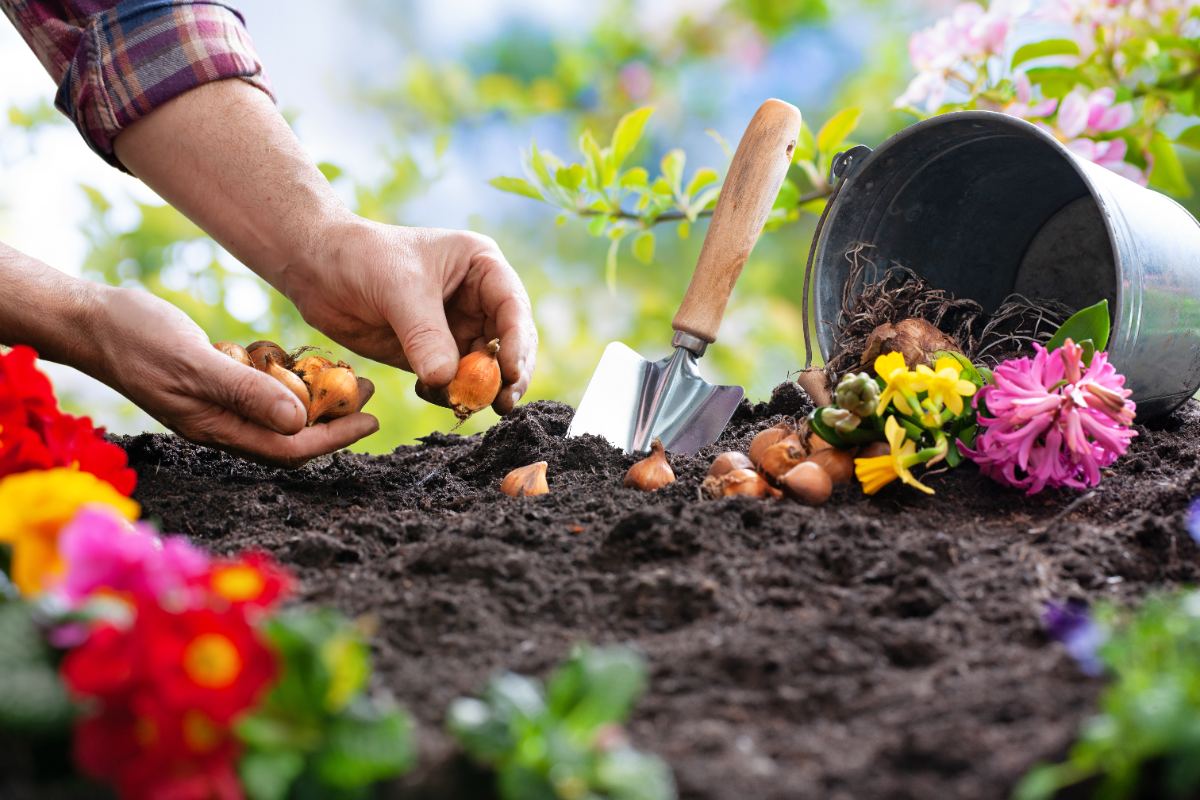
Anyone can wake up to a spring garden full of vibrant blooms. The secret? Plant the right bulbs in fall. From timeless tulips and cheerful daffodils to sweet-smelling hyacinths, discover the 10 best bulbs to plant in fall.
We’ve also asked an expert to help explain what makes these flower bulbs perfect for fall planting. With the details you’ll learn here, filling your garden with colorful flowers will be easy. But if you’d rather skip the guesswork, you can always hire a local landscaping pro who knows the best fall bulbs for your landscape.
1. Tulips

What better way to enjoy spring than to see colorful flowers in the garden? And when it comes to bulbs, many homeowners favor tulips.
“Tulips are great for a variety of colors and flower forms in the spring,” says Nicole Flowers-Kimmerle, horticulture educator at the University of Illinois Extension. A symbol of Dutch culture, these perennials have elegant cup-shaped flowers that are a feast for the eyes.
- USDA Hardiness Zones: 3-8
- Size: 6 to 28 inches tall
- Care Requirements: Low-maintenance; full sun; lightly moist, well-draining soil
- Planting Depth: 6 to 8 inches deep
- Spacing: 4 to 6 inches
- Bloom Time: Early to late spring
Pro Tip: After flowering, don’t cut the yellowed or browned leaves off. Allow them to die back naturally, returning energy to the bulb to help with next year’s bloom. (This applies to all flower bulbs in the list.)
See Related: 21 Flowering Perennials to Add Color in Gardens
2. Daffodils
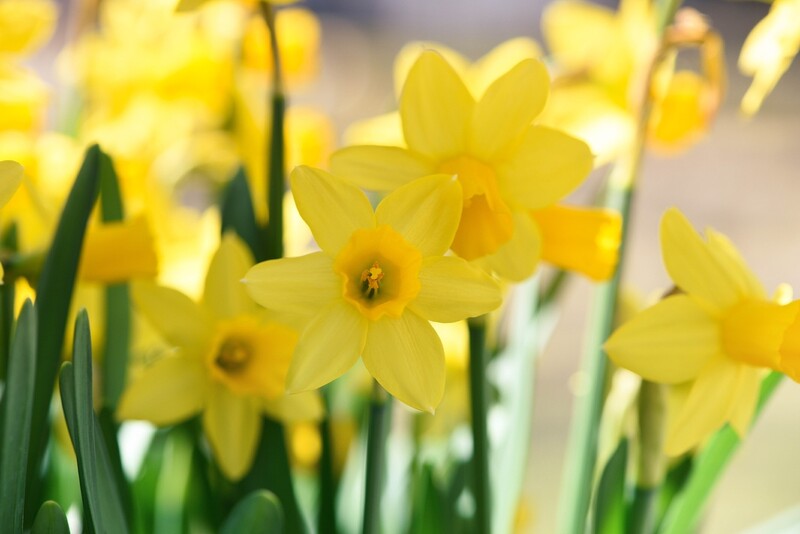
With their distinctive trumpet-shaped flowers, daffodils welcome spring like sunshine after the rain. Flowers-Kimmerle says, “Yellow, orange, and white (daffodils provide) cheerful colors in the landscape during the spring when most plants are not ready for flowering.”
She adds, “Many animals do not find daffodils palatable and will find other food sources.” So, you can rest assured that deer and voles won’t touch these bulbs.
Additionally, daffodils are the ultimate set-and-forget bulbs, as they naturalize easily and return every year with minimal care.
- USDA Hardiness Zones: 3-9
- Size: 6 to 30 inches tall
- Care Requirements: Very low-maintenance; full sun to partial shade; acidic soil
- Planting Depth: 6 to 8 inches deep
- Spacing: 2 to 3 inches
- Bloom Time: Early to mid-spring
See Related:
3. Crocuses

Crocuses may be small, but their vibrant purple, yellow, or white, cup-shaped flowers can create carpets of color in your garden. These charming crocuses with grass-like foliage can bloom early and peek through the last patches of snow.
- USDA Hardiness Zones: 3-8
- Size: 3 to 6 inches tall
- Care Requirements: Very low-maintenance; partial shade to full sun; nutrient-rich, well-draining soil
- Planting Depth: 3 to 4 inches deep
- Spacing: 2 to 3 inches
- Bloom Time: Late winter to early spring
Note: While crocuses are extremely low-maintenance, you must follow the planting steps properly, which you can read in our How to Plant Bulbs in Fall guide.
See Related: Winter Flowers That Bloom in the Cold
4. Hyacinths
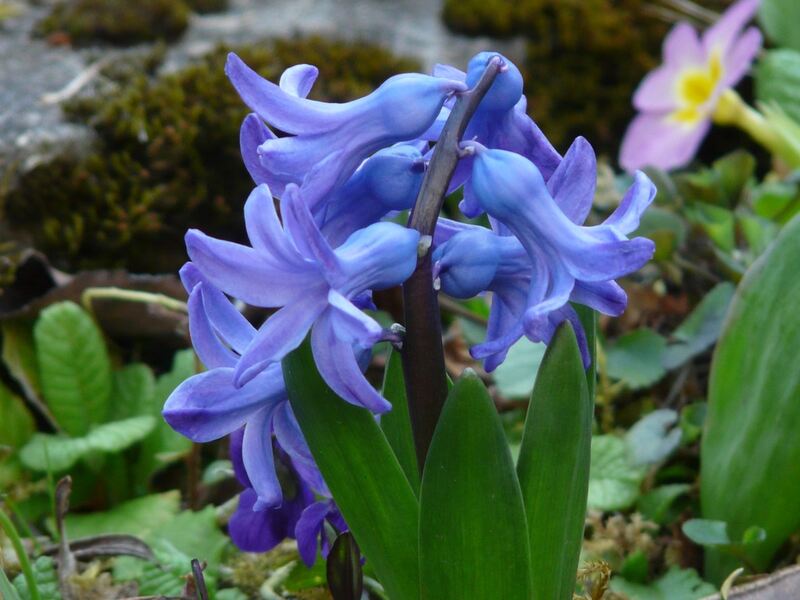
Flowers-Kimmerle shares that hyacinths are wonderful bulbs to plant in the fall because they come in a variety of colors and have a lovely floral scent.
With shades of pink, blue, purple, white, red, and yellow, these cylindrical clusters of star-shaped flowers can fill your garden with their intoxicating sweet scent and attract pollinators.
- USDA Hardiness Zones: 4-8
- Size: 8 to 12 inches tall
- Care Requirements: Moderate maintenance; partial shade to full sun; moist, well-draining, fertile soil; need staking in windy areas
- Planting Depth: 4 to 5 inches deep
- Spacing: 5 to 6 inches
- Bloom Time: Mid-spring
See Related: How to Build a Pollinator Garden
5. Alliums
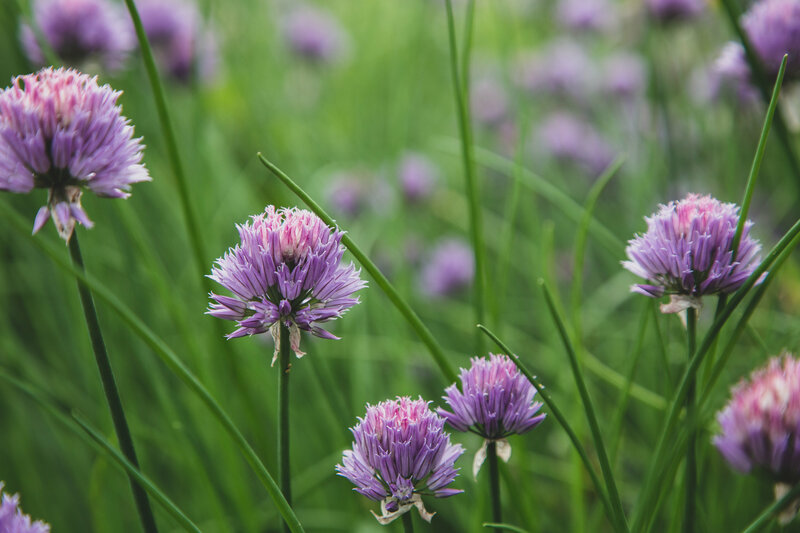
For a touch of magic to your garden, Flowers-Kimmerle suggests planting alliums, which have spherical florets that bloom on tall, sturdy stems. “It’s nice to add a new flower shape into the spring bloomers for interest.” She adds that alliums have a lovely color palette — mostly lavender, pink, and white.
Alliums can add structure and height to your flower beds. Plus, they’re also one of the most deer-resistant fall bulbs. According to Flowers-Kimmerle, “Being closely related to onions and chives, their distinct scent can prevent animals from feeding on them.”
- USDA Hardiness Zones: 4-9
- Size: 6 inches to 3 feet tall
- Care Requirements: Very low-maintenance; prefer full sun and well-drained soil
- Planting Depth: 4 to 8 inches deep
- Spacing: 3 to 4 inches for small varieties; at least 8 inches for tall species
- Bloom Time: Mid-spring to early summer
See Related: How to Prevent Weeds in Flower Beds
6. Snowdrops
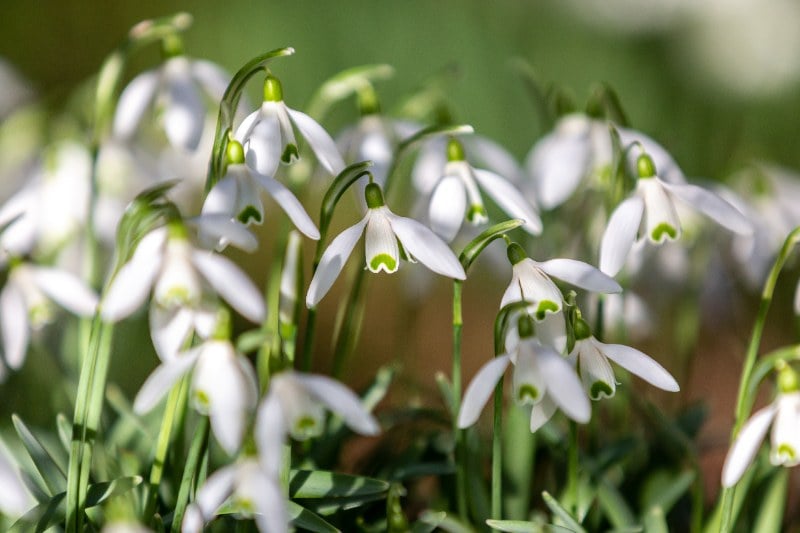
Among the earliest bloomers, snowdrops can signal the arrival of spring. Their delicate white, bell-shaped flowers (which seem to be nodding in agreement with the warming weather) usually appear while there’s still snow on the ground.
- USDA Hardiness Zones: 3-9
- Size: 4 to 10 inches tall
- Care Requirements: Low-maintenance; partial shade to full sun; loam or clay soil with high organic matter
- Planting Depth: 2 to 3 inches deep
- Spacing: 2 to 3 inches
- Bloom Time: Late winter to early spring
7. Fritillaria
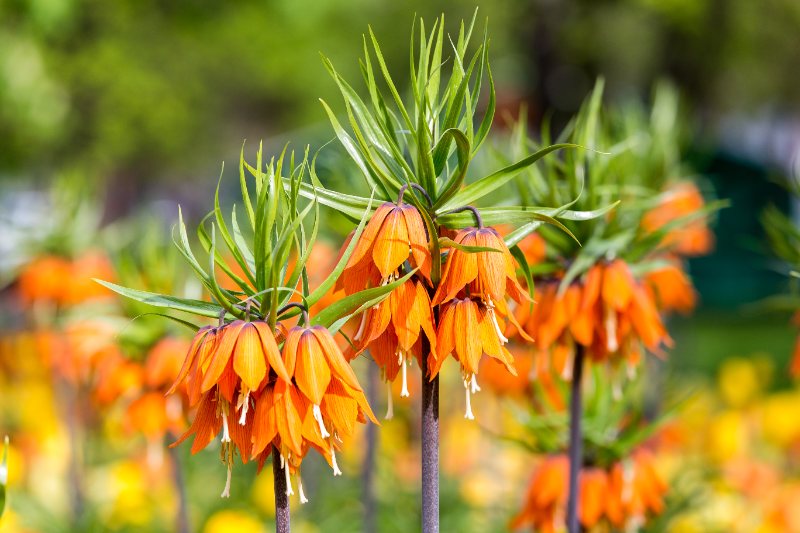
Plant fritillaria to add a touch of drama and elegance to your spring garden. Their drooping, bell-shaped flowers can be white, bright orange, or purple with a checkered pattern. These exotic-looking flower bulbs emit a musky scent that naturally deters deer, rodents, and rabbits.
- USDA Hardiness Zones: 3-8
- Size: 8 inches to 4 feet tall
- Care Requirements: Moderate to high-maintenance; partial shade to full sun; well-draining, loam or sandy soil
- Planting Depth: 4 to 10 inches deep
- Spacing: 9 to 12 inches
- Bloom Time: Mid- to late spring
See Related: How to Get Rid of Rabbits
8. Grape Hyacinths

Don’t let its common name fool you — grape hyacinths aren’t exactly hyacinths. But they’re just as delightful. They have grass-like foliage and clusters of tiny, grape-like blue or purple flowers that create a carpet of color in early spring. Grape hyacinth bulbs naturalize easily, so you need to plant them only once, and they’ll reemerge year after year.
- USDA Hardiness Zones: 4-8
- Size: 6 to 9 inches tall
- Care Requirements: Very low-maintenance; partial shade to full sun; well-draining, moist soil
- Planting Depth: 2 to 3 inches deep
- Spacing: 2 to 3 inches
- Bloom Time: Early to mid-spring
9. Scilla

These perennial bulbs can produce clusters of star-shaped flowers in vibrant shades of pink, blue, purple, or white. Their early blooms not only create a lovely carpet of color in your garden, but also provide vital nectar for pollinators.
Note, though, that scilla has a rapid growth rate. In fact, “some places are starting to consider these as invasive,” warns Flowers-Kimmerle. So, unless you want a self-sustaining, naturalized area filled with scilla, it’s best to plant them in containers or flower beds.
- USDA Hardiness Zones: 3-8
- Size: 4 to 8 inches tall
- Care Requirements: Very low-maintenance; partial shade to full sun; well-drained soil; drought-tolerant once established
- Planting Depth: 3 inches deep
- Spacing: 2 to 3 inches
- Blooming Time: Early spring
See Related: A Guide to Container Gardening
10. Anemones

At first glance, anemones may look like poppies, but their centers are larger and darker. With silky petals in vibrant shades of blue, purple, red, pink, and white, these elegant blooms are perfect for both raised garden beds and cut flower arrangements.
- USDA Hardiness Zones: 5-9
- Size: 6 to 8 inches tall
- Care Requirements: Moderate maintenance; partial shade to full sun; moist, well-drained soil; consistent watering during growing season
- Planting Depth: 2 to 3 inches deep
- Spacing: 4 to 6 inches
- Bloom Time: Early to late spring
FAQ About the Best Bulbs to Plant in Fall
While fall is the best time to plant bulbs, you can still do so in the winter, as long as the ground isn’t frozen solid. Add mulch to protect them from the cold weather.
See Related: When to Plant Bulbs in Fall
Using wire mesh or chicken wire over your bulb flower beds, or spraying animal repellent, can help deter squirrels and deer from eating the bulbs. You can also mix in squirrel- and deer-resistant bulbs, such as alliums and fritillarias.
See Related: How to Stop Squirrels from Destroying Your Yard
Yes, fertilize bulbs at planting time to help the roots establish before winter.
If your bulbs sprout in the fall before winter, the freezing winter temperatures can kill the exposed new growth.
Enjoy Colorful Blooms in Spring
To enjoy a garden bursting with color after winter, start by choosing the best bulbs to plant in fall. With a little planning — and maybe help from a local landscaping pro — you can have elegant tulips, cheerful daffodils, and other spring blooms thriving in your garden come spring.
Sources:
- “Bulbs to Plant in the Fall.” By Kristine Lang, assistant professor. South Dakota State University Extension.
- “Fall Garden Opportunities: Planting Bulbs for Spring Blooms.” By Manya Scheps, master gardener. University of California Agriculture and Natural Resources.
- “Hyacinth Bulbs Need To Go in the Ground Soon.” Oklahoma State University Extension.
- Nicole Flowers-Kimmerle, horticulture educator at the University of Illinois Extension. Personal interview.
- “North Carolina Extension Gardener Plant Toolbox.” North Carolina State University Extension.
- “Plant Spring-Blooming Bulbs in Fall for Years of Low-Maintenance Color.” By Kym Pokorny, communications specialist. Oregon State University Extension.
Main Image: A gardener plants bulbs in the fall. Image Credit: Alexander Raths / Adobe Stock